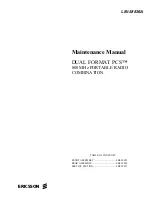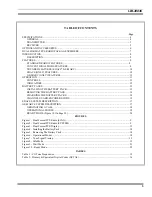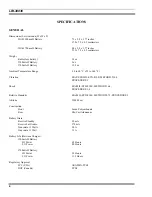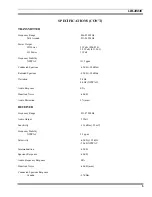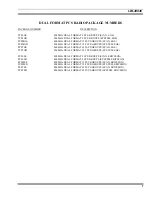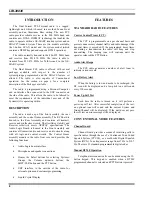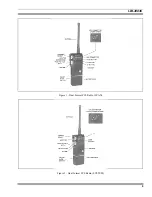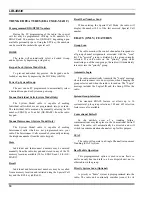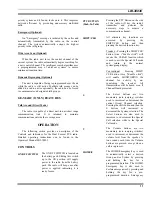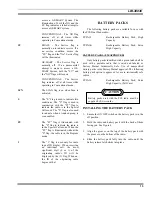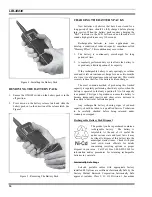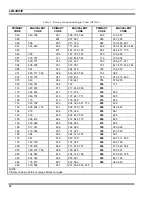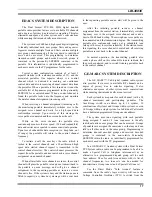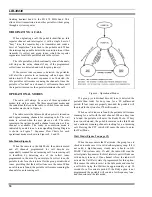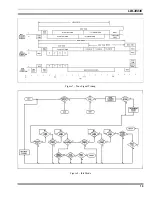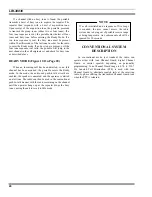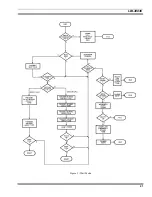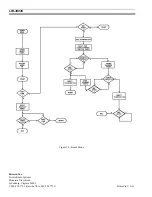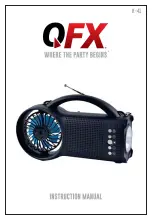
LBI-38836
15
locations in the presence of Groups C, D, E, F and G
atmospheres. Non-Incendive approval includes Class I,
Division 2 hazardous locations in the presence of Groups A,
B, C and D atmospheres.
Hazardous locations are definedin the National
Electrical Code. Useful standards NFPA 437A and NFPA
437M for the classifications of hazardous areas can be
ordered from the National Fire Protection Association,
Batterymarch Park, Quincy, MA 02269.
CHANNEL GUARD ENCODE/DECODE
The radio can be programmed for Channel Guard
(CTCSS) encode/decode tone frequencies of Hz to 210.7
Hz, including all of the standard EIA frequencies. Each
channel may be programmed for encode/decode, encode
only, decode only or for no Channel Guard frequency.
A list of the standard tone frequencies is shown in Table
1. A list of digital Channel Guard codes and their
equivalents are shown in Table 2.
Table 1 - CG Tone Frequencies
Standard Tone Frequencies Hz
67.0
97.4
136.5
192.8
71.9
100.0
141.3
203.5
74.4
103.5
146.2
210.7
77.0
107.2
151.4
79.7
110.9
156.7
82.5
114.8
162.2
85.4
118.8
167.9
88.5
123.0
173.8
91.5
127.3
179.9
94.8
131.8
186.2
1. Do not use 179.9 Hz or 118.8 Hz in areas served by 60 Hz
power distribution systems ( or 100.0 Hz or 151.4 Hz in areas
supplied with 50 Hz power). Hum modulation of co-channel
stations may “false” Channel Guard decoders.
2. Do not use adjacent Channel Guard tone frequencies in
systems employing multiple Channel Guard tones. Avoid
same-areas co-channel use of adjacent Channel Guard tones
whenever possible. As stated in EIA Standard RS-220, there
is a possibility of decoder falsing.
3. To minimize receiver turn-on time delay, especially in system
using Channel Guard repeaters or receiver voting, choose the
highest usable Channel Guard tone frequency. Do not use
tones below 100 Hz when it is necessary to meet the receiver
response time requirements of EIA Standard RS-220.

